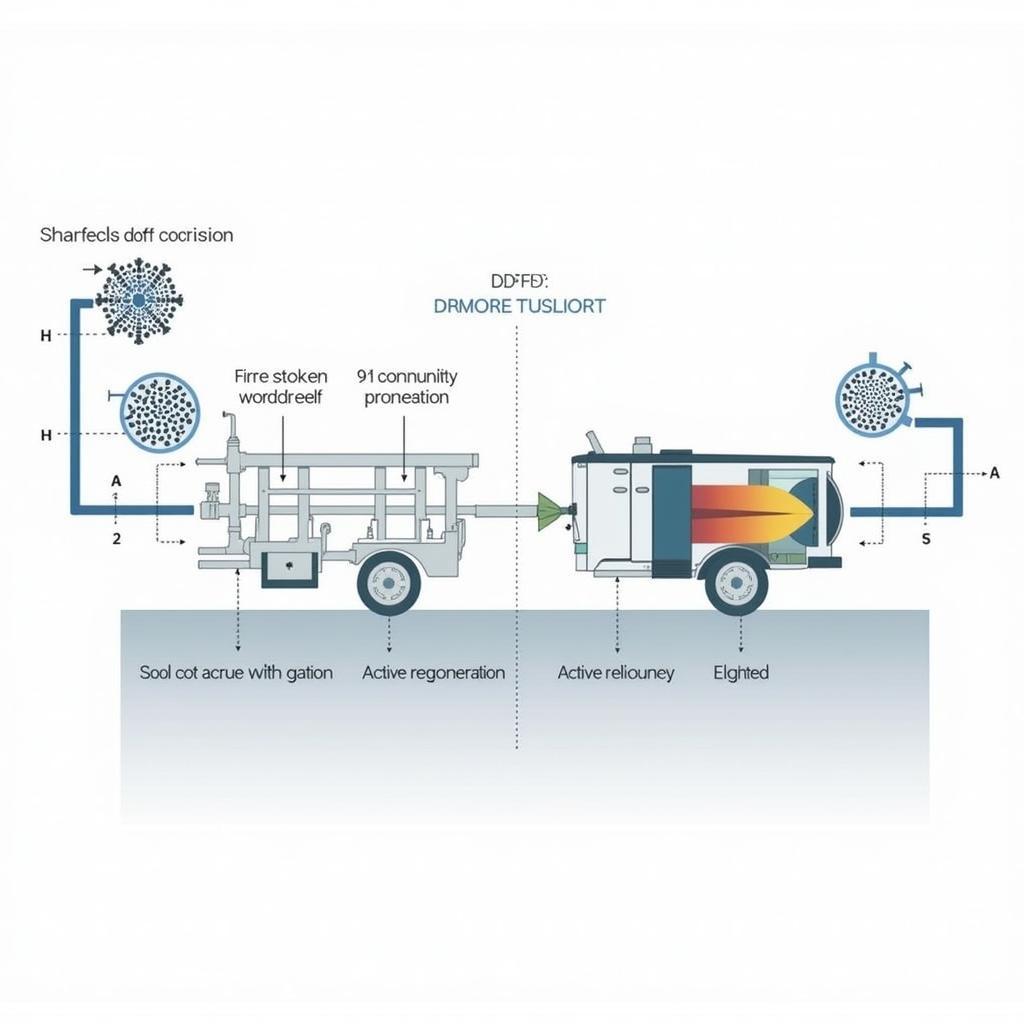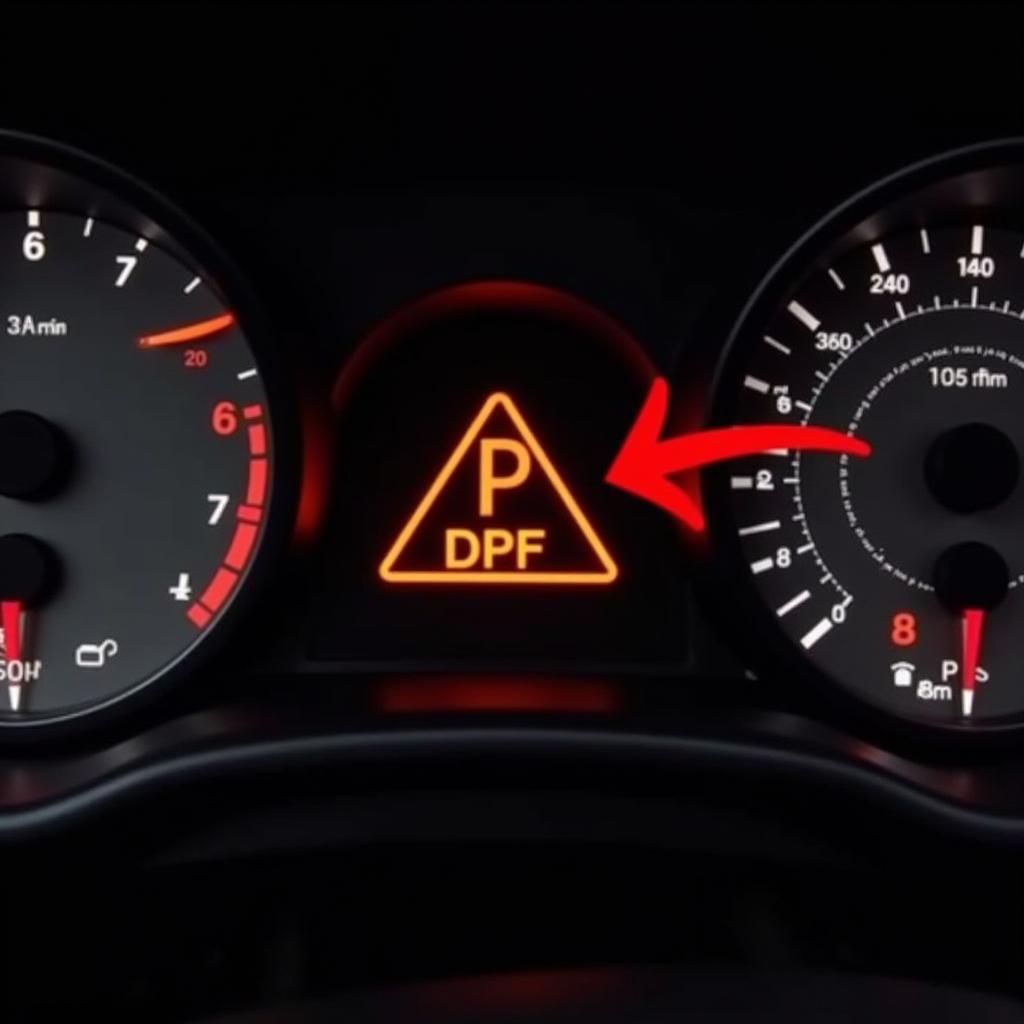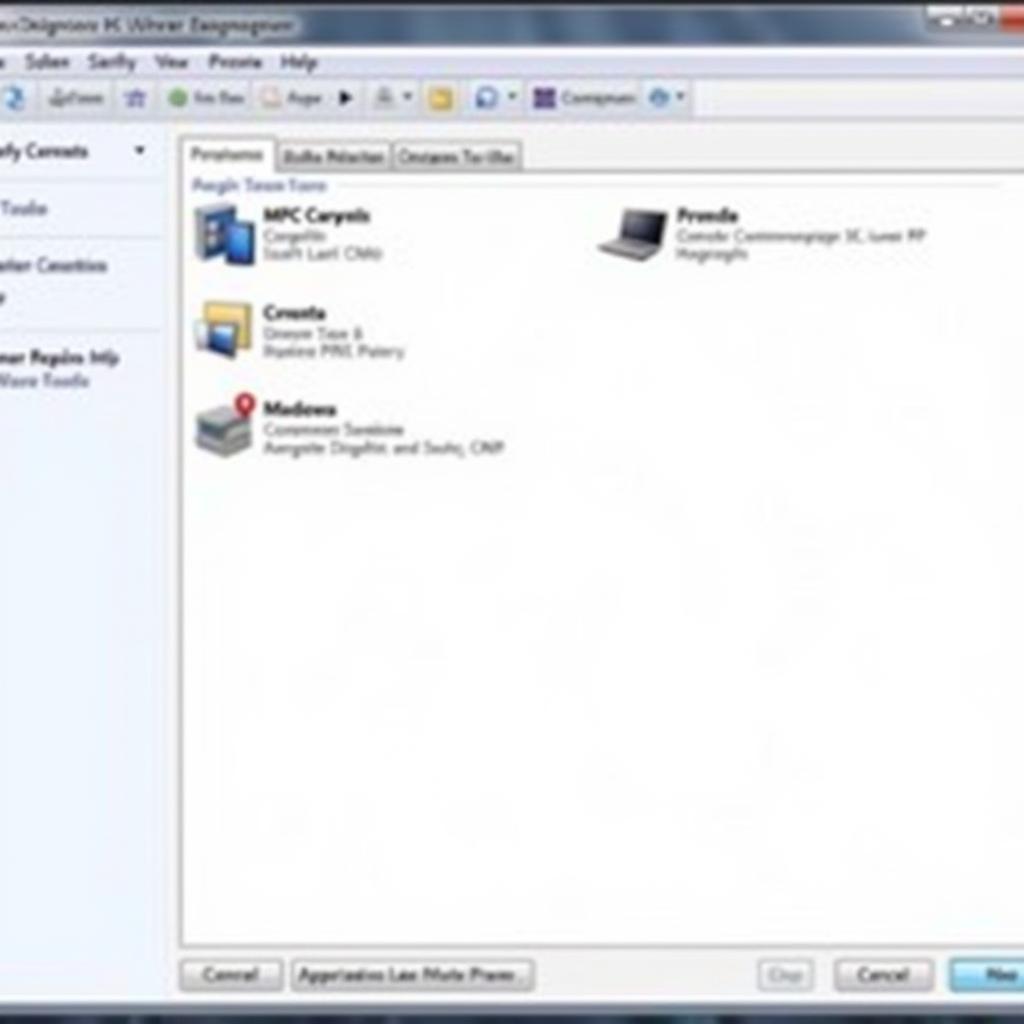A Diesel Particulate Filter (DPF) is an essential component of modern diesel vehicles, responsible for capturing and removing harmful soot from exhaust gases. Over time, the DPF can become clogged, requiring a regeneration process to burn off the accumulated soot. This is where a Diagnostic Tool For Dpf Regeneration comes in, providing crucial information and control over this essential maintenance procedure.
Understanding DPF Regeneration and the Need for a Diagnostic Tool
DPF regeneration is a process that burns off accumulated soot within the filter, typically achieved by increasing exhaust temperatures. This can happen passively during regular driving conditions or actively through a forced regeneration cycle initiated by the engine control unit (ECU). However, various factors can hinder passive regeneration, leading to DPF clogging and potential performance issues.
A diagnostic tool for DPF regeneration allows you to monitor the DPF’s health, identify potential problems, and even initiate a forced regeneration when necessary. This tool serves as your eyes and ears into the DPF system, providing valuable data that can prevent costly repairs and keep your diesel vehicle running smoothly.
 DPF Regeneration Process Illustration
DPF Regeneration Process Illustration
Benefits of Using a Diagnostic Tool for DPF Regeneration
Investing in a diagnostic tool for DPF regeneration offers numerous advantages for both car owners and professional mechanics:
- Early Problem Detection: By monitoring DPF soot load, temperature, and pressure readings, you can identify potential clogging issues before they escalate into costly repairs or breakdowns.
- Forced Regeneration Control: In situations where passive regeneration is insufficient, a diagnostic tool allows you to initiate a forced regeneration cycle safely and effectively.
- Troubleshooting DPF Issues: If the DPF warning light illuminates, the diagnostic tool can retrieve fault codes and provide insights into the root cause of the problem, enabling efficient troubleshooting.
- Preventive Maintenance: Regularly checking DPF parameters with a diagnostic tool allows you to stay ahead of potential issues and perform preventative maintenance, prolonging the lifespan of your DPF.
[ltr 450 diagnostic tool]
Key Features of a DPF Regeneration Diagnostic Tool
When choosing a diagnostic tool for DPF regeneration, consider the following features:
- Vehicle Compatibility: Ensure the tool is compatible with your vehicle’s make, model, and year to access the necessary DPF data.
- DPF-Specific Parameters: Look for a tool that can read and display essential DPF parameters such as soot load, pressure differential, and regeneration status.
- Forced Regeneration Capability: Verify if the tool allows you to initiate a forced regeneration cycle and monitor the process in real-time.
- Fault Code Reading and Clearing: The tool should be able to read and clear DPF-related fault codes, aiding in diagnosis and repair.
- User Interface and Data Presentation: Choose a tool with a user-friendly interface and clear data presentation for easy interpretation.
 Diagnostic Tool Interface with DPF Data
Diagnostic Tool Interface with DPF Data
“A reliable diagnostic tool is invaluable for anyone dealing with DPF systems,” says John Miller, a seasoned automotive engineer with over 15 years of experience. “It not only helps in diagnosing problems but also empowers users to proactively manage DPF health and avoid costly repairs.”
How to Use a Diagnostic Tool for DPF Regeneration
Using a diagnostic tool for DPF regeneration is typically straightforward:
- Connect the tool: Connect the diagnostic tool to your vehicle’s OBD-II port, usually located under the dashboard on the driver’s side.
- Turn on the ignition: Turn the ignition on but do not start the engine.
- Access DPF data: Navigate through the tool’s menu to access the DPF-related parameters and information.
- Monitor or initiate regeneration: Depending on the tool’s capabilities, you can monitor the DPF’s status, view historical data, or initiate a forced regeneration cycle if necessary.
[pro-link edge heavy-duty diagnostic scan tool]
Common DPF Regeneration Issues and Troubleshooting Tips
Despite regular maintenance, DPF issues can still arise. Here are some common problems and troubleshooting tips:
- Frequent Regeneration Cycles: This could indicate underlying issues such as faulty sensors, a clogged DPF, or problems with the exhaust system. A diagnostic tool can help pinpoint the cause.
- Incomplete Regeneration: If the regeneration process is interrupted repeatedly, it can lead to DPF clogging. Using a diagnostic tool, you can check for any error codes and monitor the regeneration process to completion.
- DPF Warning Light On: This usually signals a problem with the DPF system. Connect a diagnostic tool to retrieve specific fault codes, which will guide you towards the issue.
“Don’t ignore the DPF warning light,” warns Miller. “It’s a clear sign that your vehicle needs attention. Using a diagnostic tool can help you address the problem quickly and effectively.”
 Dashboard Display Showing DPF Warning Light
Dashboard Display Showing DPF Warning Light
Conclusion
A diagnostic tool for DPF regeneration is an indispensable tool for any diesel vehicle owner or mechanic. By providing insights into the DPF’s health, facilitating forced regeneration, and aiding in troubleshooting, this tool can save you time, money, and frustration. Investing in a quality diagnostic tool is an investment in the longevity and performance of your diesel engine.
For further assistance or inquiries regarding DPF regeneration and diagnostic tools, contact ScanToolUS at +1 (641) 206-8880 or visit our office at 1615 S Laramie Ave, Cicero, IL 60804, USA.


